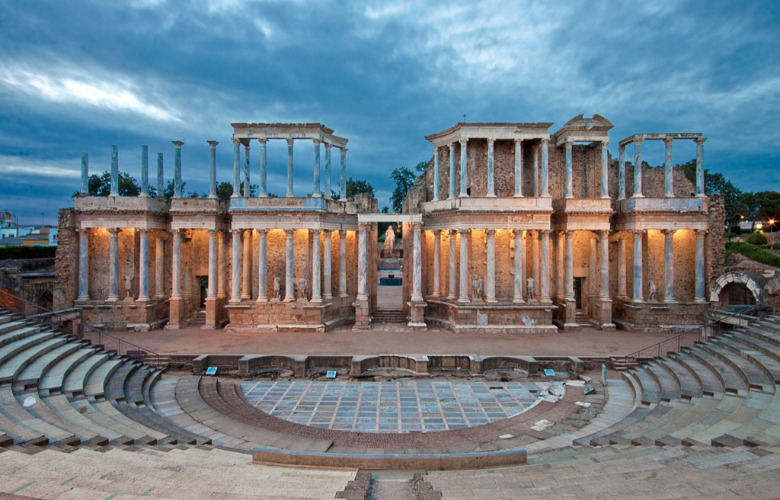
In another article a few days ago we looked at the Teatro Olimpico in Vicenza, Italy. The oldest, still operating indoor theatre in the world. It was built in 1585. Today, let’s go outdoors. And let’s go a little further back in theatre history. Far enough back, in fact, to make the Teatro Olimpico look like a teenager. In this journey through time, we’ll have a look at the 5 oldest amphitheaters in the world, all of which go back centuries.
In ancient Greece, the Theatre of Dionysus was the largest venue of its kind. It was built in the 5th century B.C.E.
As the name gives away, this theatre is dedicated to Dionysus, the Greek god of wine and theatre. Allegedly, many worshippers prayed to him before each performance to guarantee success.
The theatre is in the northern part of the Acropolis in Athens and was a popular entertainment venue for many centuries.
According to scholars, around the year 407 the performance time was extended to about six hours due to public demand. At the same time, the entry fees were raised as well.
Another ancient Greek treasure, this theatre is located near the town of Ligurio in the middle of a pine forest. The structure was designed by Polykleitos the Younger in the 4th century B.C.E. He used the natural unevenness of the landscape to aid his design.
To this day, the Theatre of Epidaurus is said to have the best acoustics in the world.
If you ever go on a tour there, you will experience the tour guides dispersing their groups throughout the theatre for a little show and tell. No matter where people will be in the theatre, they will be able to hear a match drop onto the stage floor.
It was built in the 4th century B.C.E. with limestone from Mount Parnassus. It is located close to the temple of Apollo in Delphi and overlooks an entire valley. And, yes, it’s in Greece, too. You guessed right.
Archeologists believe that the theatre’s thirty-five rows held up to five thousand spectators.
It seems that various musical events and festivals, poetry readings, and plays were often performed in the Delphi theatre.
There is architectonic evidence that the theatre was remodeled several times. For example, the seats in the lower rows were built during the Hellenistic and Roman periods.
We are finally leaving Greece and have now arrived in France for a quick look at yet another ancient marvel.
The Roman Theatre of Orange was built in the 1st century. It is located close to Avignon. Amazingly, the theatre is very well preserved and was declared a UNESCO World Heritage Site in 1981.
The acoustic wall of the theatre is completely intact. It is the key to the excellent acoustics in this venue.
Each year, the Choregies Festival takes place here, Les Chorégies d’Orange. It is a summer opera festival held each August since 1860.
For this last, historical gem we travel to Spain. The Theatre of Merida was built between the years 15-16 B.C.E.
The construction was sponsored by Roman Consul Marcus Vipsanius Agrippa. He was an architect himself and responsible for some of the most notable buildings in history. For example, he built the original Pantheon.
The theatre’s design was originally classical Roman, but later restorations added a myriad of architectural styles to the building.
The Theatre of Merida could seat up to six thousand spectators and is currently used in an annual winter festival.
When Sailors Were Stagehands – Debunking a Bit of Rigging History
10 Strange Theatre Terms and Their Meanings


Liam Klenk was born in Central Europe and has since lived on four continents. Liam has always been engaged in creative pursuits, ranging from photography and graphic design, to writing short stories and poetry, to working in theatre and shows. In 2016, Liam published his first book and memoir, 'Paralian'.
Read Full Profile© 2021 TheatreArtLife. All rights reserved.

Thank you so much for reading, but you have now reached your free article limit for this month.
Our contributors are currently writing more articles for you to enjoy.
To keep reading, all you have to do is become a subscriber and then you can read unlimited articles anytime.
Your investment will help us continue to ignite connections across the globe in live entertainment and build this community for industry professionals.